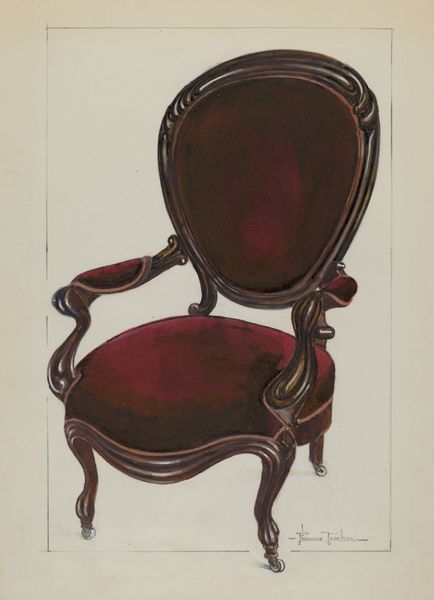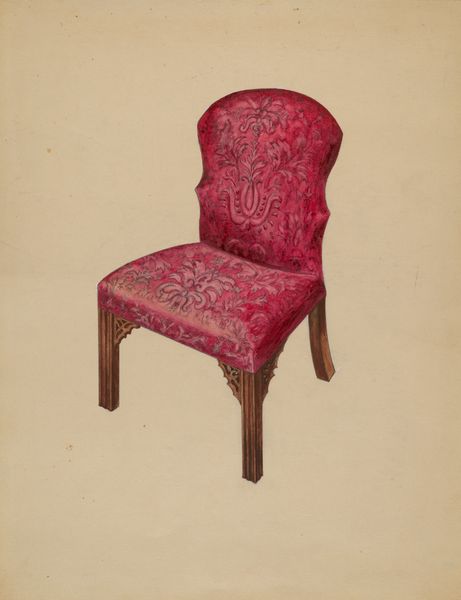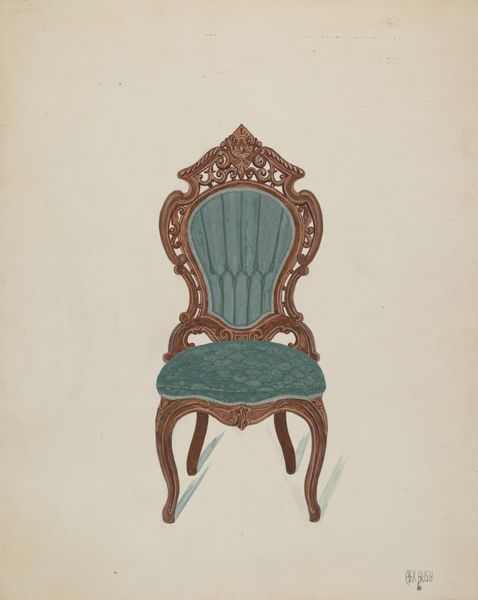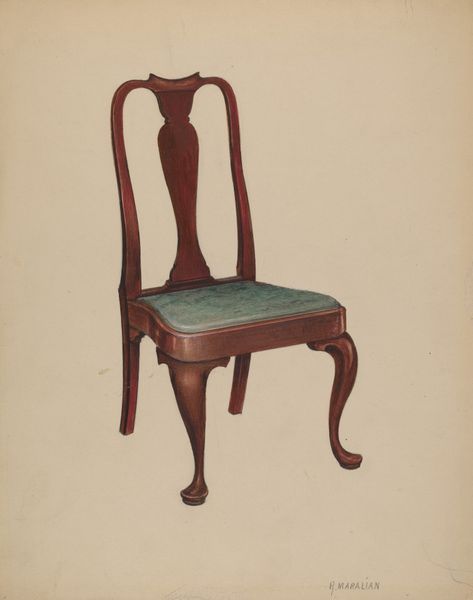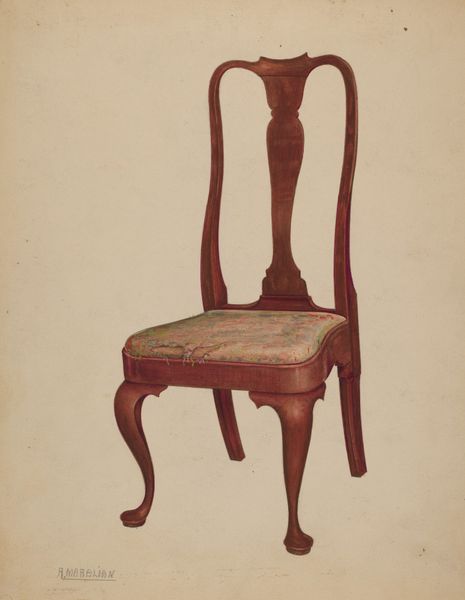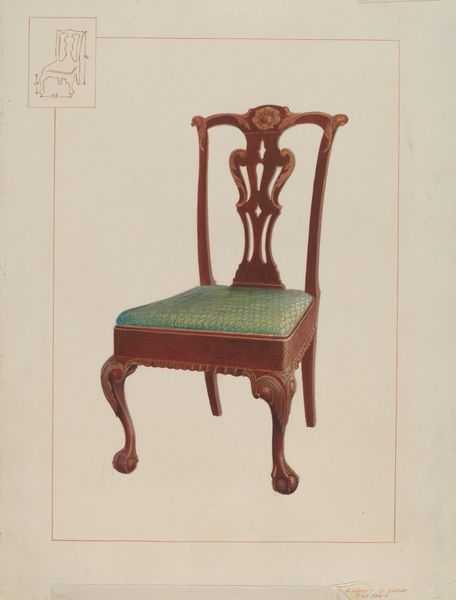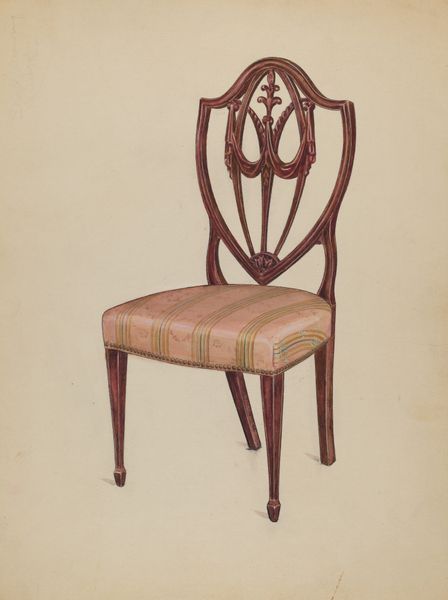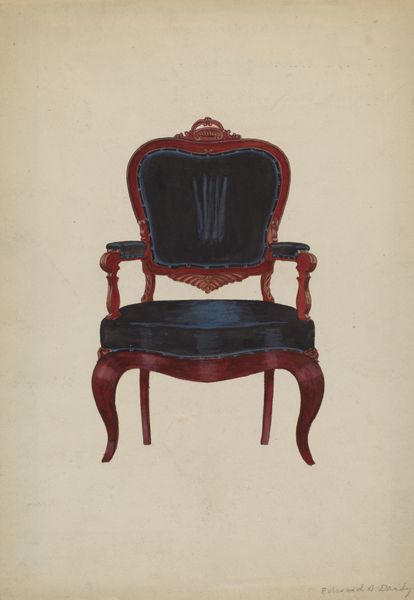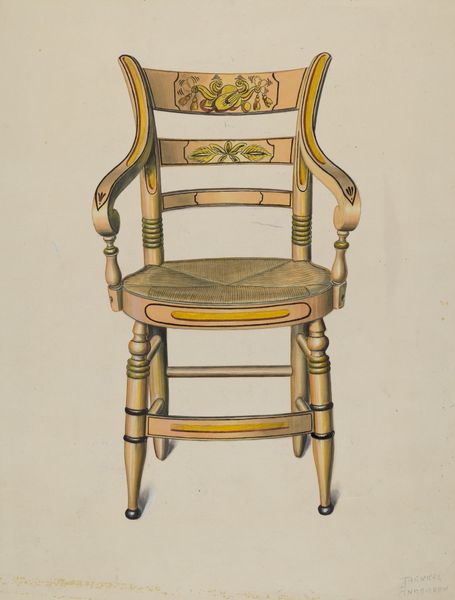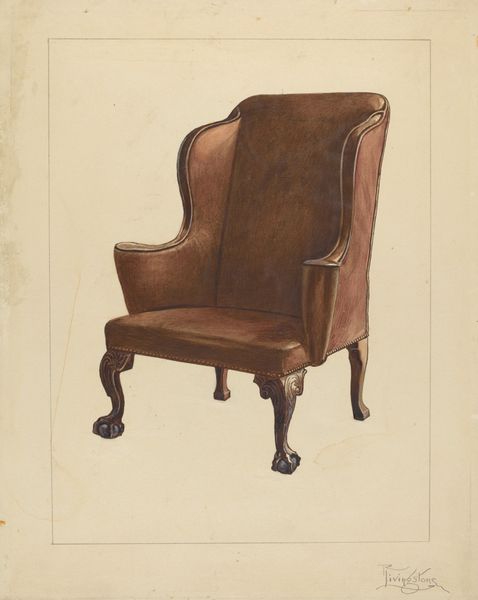
drawing, pencil, pastel
#
portrait
#
drawing
#
pencil
#
pastel
#
academic-art
Dimensions: overall: 30.3 x 22.7 cm (11 15/16 x 8 15/16 in.) Original IAD Object: none given
Copyright: National Gallery of Art: CC0 1.0
Curator: Behold Frank Wenger's "Chair," a drawing made around 1936 with pencil and pastel. It depicts a solitary chair. Editor: My first thought is—burgundy! That velvety shade just radiates an old-world opulence. But then I wonder, what stories has this chair silently witnessed? Curator: Indeed! There’s a certain intimacy implied. Wenger wasn't just drawing a chair; he was capturing a presence, almost a character. Consider the academic art style: Wenger presents this everyday object in a formal, considered light, endowing it with significance. It seems this piece emerges at the intersection of private experience and grand presentation. Editor: It feels burdened by a legacy, doesn't it? Like it's been sitting in a parlor, silently observing shifting social mores. I immediately think of how chairs historically became gendered in Victorian society – where would it have stood in a home, which kinds of bodies would it have supported? What position did its presumed occupant hold? And let’s not forget the latent message of display and exclusion when something as mundane as a seat is made so precious. Curator: Absolutely. Perhaps Wenger wanted to tease that tension. You almost feel like reaching out and sinking into that plush seat, yet you're simultaneously aware that you’re separated by time, and perhaps, also, an unspoken social boundary. I see humor there. The whole enterprise of giving such meticulous attention to something so quotidian tickles me. A playful subversion, perhaps? Editor: Playful or perhaps aspirational. Furniture has always been entangled with aspirations of wealth and social mobility. Consider how different demographics gained and were denied access to different sorts of spaces within the home; Wenger offers us, here, a chance to think through furniture’s ability to shape – and limit – people’s experiences of domesticity and belonging. The details are a window into social dynamics. Curator: A window and a mirror, perhaps? Editor: A provocatively complicated window, at least. Curator: I can raise a glass to that, given the material. I see, feel, imagine… Editor: Precisely – which should always be our departure.
Comments
No comments
Be the first to comment and join the conversation on the ultimate creative platform.

